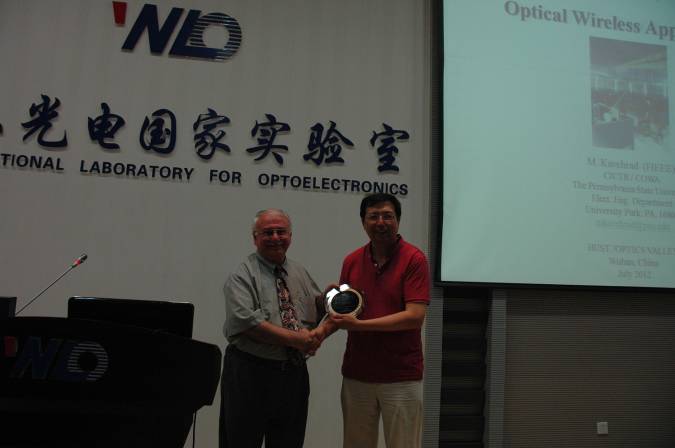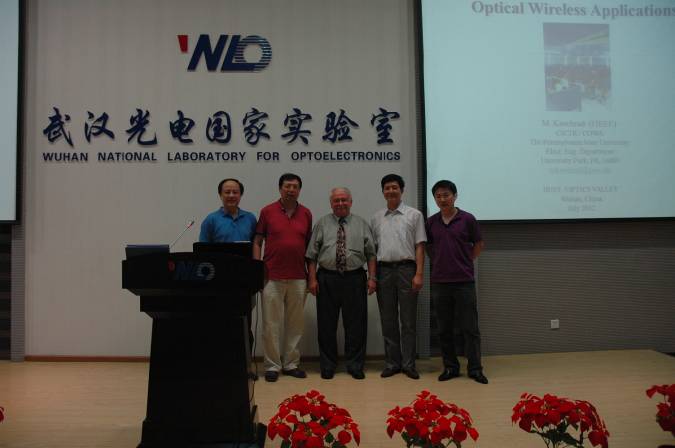Title:Optical wireless technology and application
Speaker: Prof. Mohsen Kavehrad
Time:July. 02. 2012.10:00-11:30
Venue: Room A101 At WNLO
Abstract:
After a brief overview on Penn-State/Georgia-Tech NSF Industry-University-Cooperative-Research Center on Optical Wireless Applications (COWA), we will focus on free space optical communications (FSO) through clouds and turbulent atmosphere.
FSO communications is the only viable solution for creating a three-dimensional global communications grid of inter-connected ground and airborne nodes. The huge amount of data exchange between satellites and ground stations demands enormous capacity that cannot be provided by strictly regulated, scarce resources of the Radio Frequency (RF) spectrum. FSO communications, on the other hand, has the potential of providing virtually unlimited bandwidth. Furthermore, due to the spatial confinement of laser beams, such links are very secure. In other words, security is guaranteed at the physical layer. However, the promised enormous data rates are only available under clear weather conditions, and atmospheric phenomena such as clouds, fog, and even turbulence can degrade the performance, dramatically. While turbid media such as clouds and aerosols cause pulse broadening in space and time, turbulence presents itself as scintillation and fading. Hence, to exploit the great potentials of FSO at its best under all weather conditions, prudent measures must be taken in the design of transmitter and receiver. More specifically, multiple transmitters and receivers can be used to combat the turbulence-induced fading and to compensate for pulse attenuation and broadening caused by scattering. In this presentation, Multiple-Input Multiple-Output (MIMO) transmitter and receiver designs for FSO communications are investigated and the achievable performance improvements are discussed.
Biography:
Dr. Kavehrad joined Penn State in January 1997 as the W. L. Weiss Endowed Chair Professor. He is the founding director of Center for Information and Communications Technology Research. His prior work experience includes working for Fairchild Industries, GTE (Satellite Corp. and Labs.) and Bell Laboratories before joining the Department of Electrical Engineering at University of Ottawa in March 1989 as a Professor and Director of Photonic Networks and Systems Thrust in the Communications and Information Technology Ontario (CITO). During 1997-1998 he was also the CTO and a Vice President at Tele-Beam Inc., State College, PA. He has been a senior consultant to NTT, Nortel and AT&T Shannon Research Labs and consultant to a score of other major corporations and government agencies. He is a Fellow of the IEEE. His works have been published in close to 400 refereed journal and conference papers, several books and book chapters, and he holds several key issued patents in his work areas.

